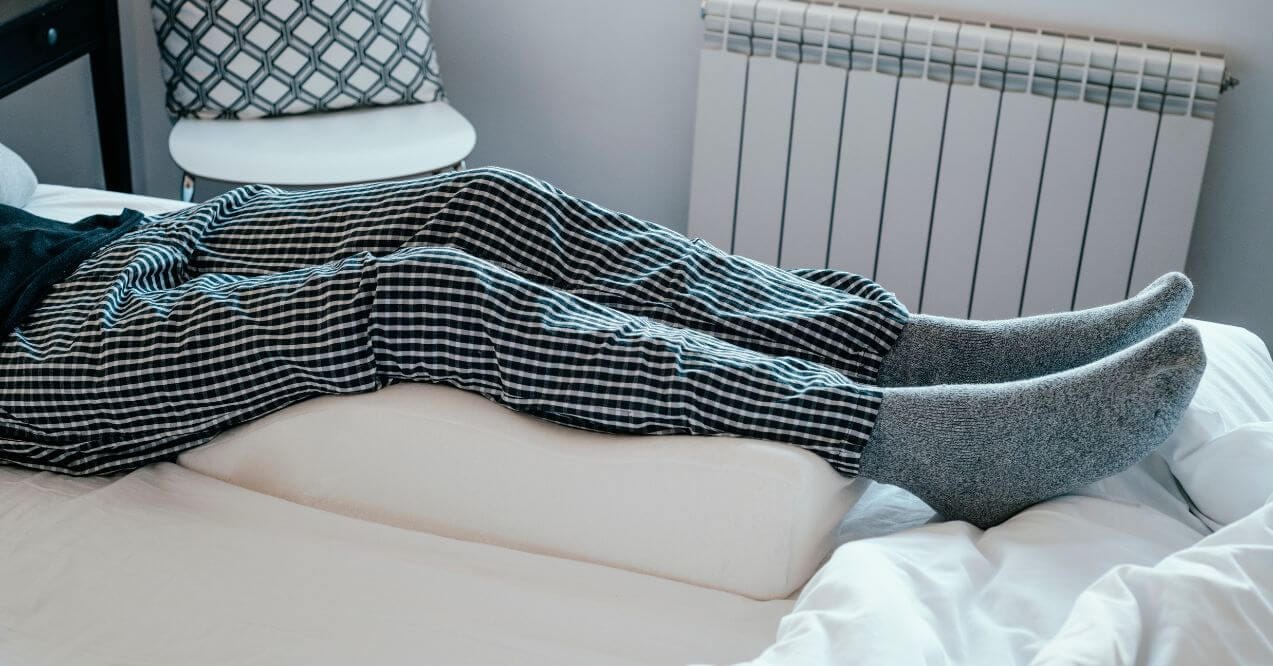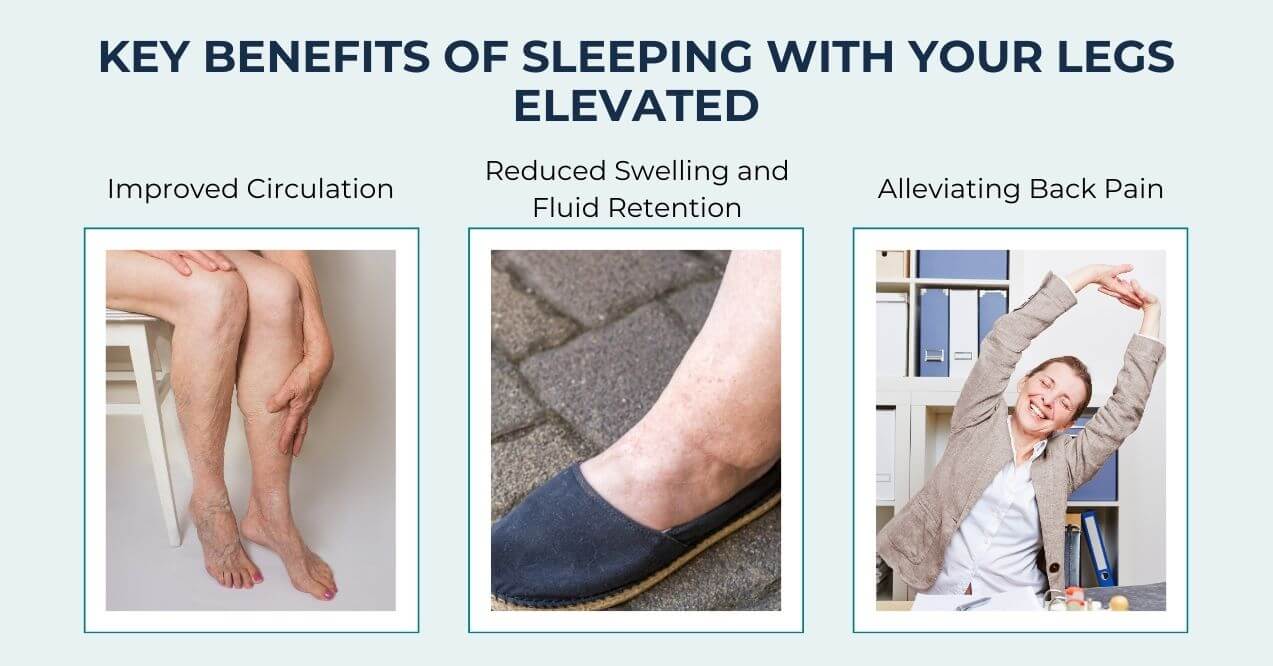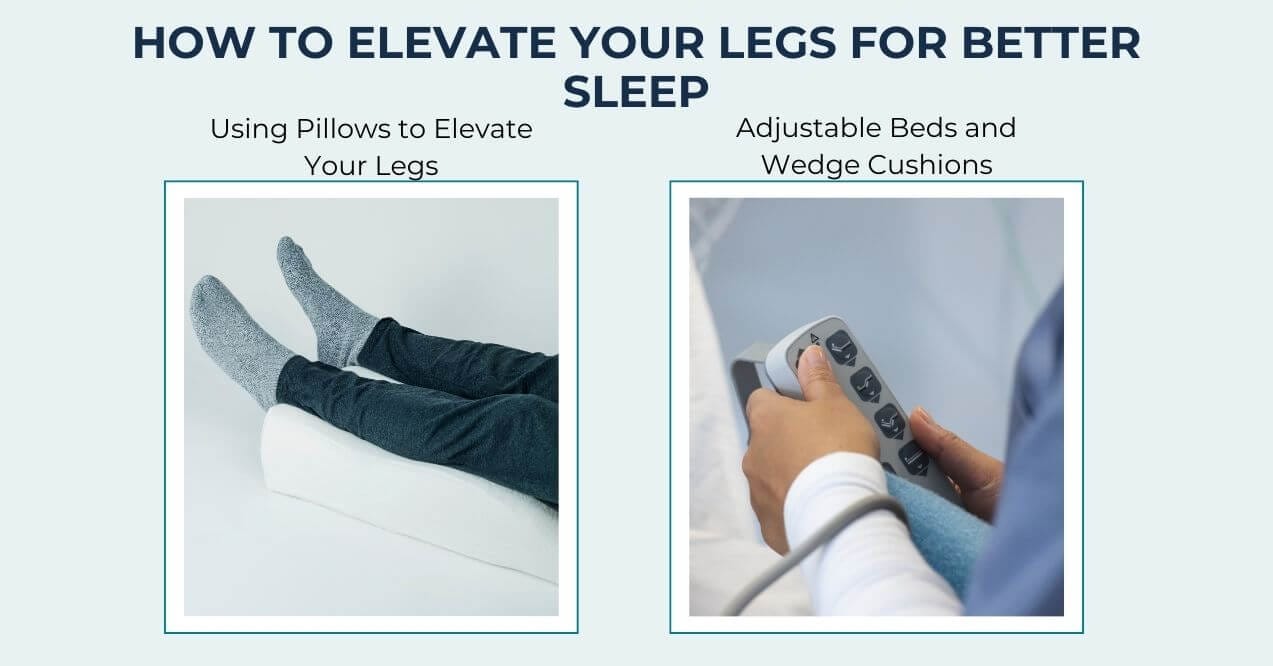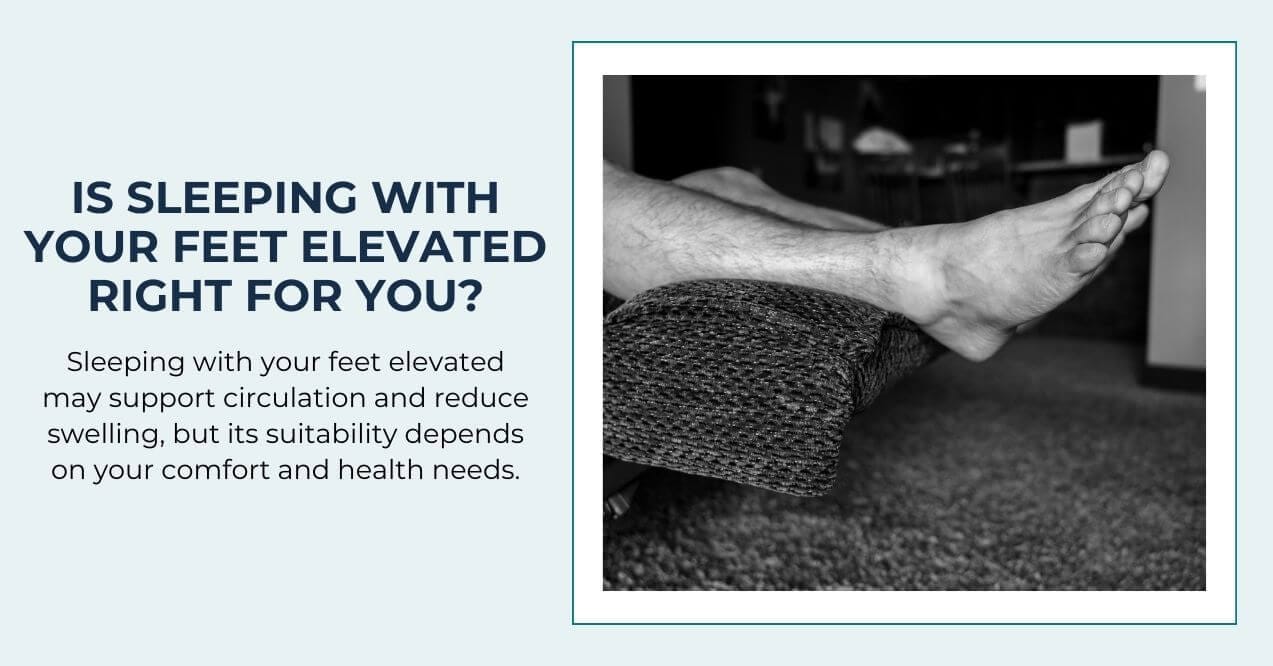Is It Good to Sleep With Your Feet Elevated?
Wondering is it good to sleep with your feet elevated? Discover how this position supports circulation and reduces discomfort.


More people are exploring ways to improve their rest and nighttime comfort – one method gaining attention is sleeping with the feet slightly raised. But is it good to sleep with your feet elevated? Supporters say this simple shift in position may help alleviate swelling, support healthy circulation, and promote more restful sleep.
Whether you’re on your feet all day or simply looking to enhance overnight recovery, this article explores whether elevating your legs could be the missing piece of the puzzle for your overall comfort and wellness.
Key Benefits of Sleeping with Your Legs Elevated

Sleeping with legs elevated offers several advantages that can enhance your nightly rest and overall comfort. This position works with your body’s natural systems to support circulation, reduce discomfort, and promote better sleep quality.
1. Improved Circulation
Elevating your legs while sleeping supports blood flow by working with gravity rather than against it. This position helps blood move more efficiently from your lower extremities back toward your heart. The elevated angle reduces strain on the veins in your legs and feet, which often work harder during upright activities.
Better circulation can also support the appearance of visible veins, including spider veins on ankles and legs. When blood flows more effectively, it reduces the pooling that can contribute to vein visibility and discomfort.
2. Reduced Swelling and Fluid Retention
Leg elevation helps address fluid accumulation that commonly occurs in the lower extremities. This position allows excess fluid to drain more effectively, reducing puffiness in legs, feet, and ankles. People who stand for extended periods or experience regular swelling often notice improvement with this simple adjustment.
Key benefits include:
- Reduced ankle and foot swelling
- Less morning stiffness in lower legs
- Improved comfort for those with fluid retention issues
3. Alleviating Back Pain
Elevating your feet can reduce pressure on your lower back by promoting better spinal alignment. This position helps maintain the natural curve of your spine while you sleep. The elevation takes weight off compressed areas and can alleviate tension that builds up during daily activities.
While elevating your legs supports circulation through your cardiovascular system, your lymphatic system also plays a crucial role in managing fluid balance and reducing swelling. For those seeking additional support beyond positioning, best supplements for lymph system offer targeted nutritional assistance for optimal lymphatic function.

These supplements feature such ingredients as Echinacea purpurea, Cleavers Extract, and Rutin – traditionally used for supporting lymphatic drainage and circulation. By promoting healthy lymphatic flow, these formulas may help alleviate the puffiness, swelling, and heavy sensations that often affect the legs and feet.
Combining leg elevation with targeted lymphatic support addresses fluid balance from two angles. This approach may help reduce the discomfort and swelling that interfere with restful sleep.
Who Can Benefit from Sleeping with Elevated Legs?
Certain groups may find particular value in sleeping with elevated legs. This position can support various comfort and circulation needs, though individual results may vary.
People who may benefit include:
- Those with varicose veins or visible leg veins
- Individuals experiencing regular leg or ankle swelling
- People who stand for extended periods during work
- Those with lower back discomfort or stiffness
- Individuals with fluid retention concerns
- People seeking better circulation support
Expectant mothers often find leg elevation helpful for reducing swelling, though positioning preferences may change throughout different stages. The key is understanding your individual needs and comfort levels. What works well for one person may not provide the same benefits for another.
How to Elevate Your Legs for Better Sleep

Proper leg elevation requires the right angle and consistent support throughout the night. The ideal elevation ranges from 6 to 12 inches above heart level, creating a gentle slope that supports circulation without causing discomfort.
Using Pillows to Elevate Your Legs
Pillows offer an affordable and accessible way to elevate your legs while sleeping. Start with 2-3 standard pillows stacked under your legs from knee to ankle. This creates a gradual incline that supports your entire lower leg.
Tips for pillow elevation:
- Place pillows along the full length of your legs
- Avoid elevating only your feet, which can strain your knees
- Use firmer pillows that maintain their shape throughout the night
- Adjust the number of pillows based on your comfort level
Adjustable Beds and Wedge Cushions
Adjustable beds and foam wedge cushions provide more consistent elevation than traditional pillows. These options maintain their position throughout the night and offer precise angle control. Wedge cushions designed specifically for leg elevation often feature gradual slopes that support natural leg positioning while reducing pressure points.
Are There Any Risks to Sleeping with Your Feet Elevated?
While leg elevation is generally safe for most people, improper positioning can cause discomfort or complications. Elevating legs too high may restrict blood flow or create pressure points that disrupt sleep quality.
Potential concerns include:
- Knee strain from incorrect angles
- Hip discomfort from excessive elevation
- Difficulty maintaining position throughout the night
- Increased pressure on certain areas
Is Sleeping with Your Feet Elevated Right for You?

Determining if elevated leg sleeping suits your needs requires considering your individual comfort and health goals. This position offers clear benefits for circulation support and swelling reduction, but it may not address everyone’s sleep concerns effectively.
Consider your personal factors:
- Current sleep comfort and quality
- Presence of leg swelling or circulation concerns
- Existing back or joint discomfort
- Ability to maintain position comfortably
If you have ongoing health concerns or chronic conditions, consulting with a healthcare provider can help you make an informed decision about whether elevated sleeping supports your wellness goals.
Key Takeaways
So, is it good to sleep with your feet elevated? For many people, this position can support circulation, reduce swelling, and alleviate back discomfort. However, individual needs vary significantly. Proper positioning is essential to avoid strain or discomfort.
Consider your specific concerns, comfort level, and any existing health conditions. Start gradually and listen to your body’s response. Those with chronic conditions should consult a healthcare provider before making significant sleep position changes.
Yes, elevated leg sleeping can help alleviate pressure and support circulation, which may reduce discomfort in legs and feet. This position allows better blood flow and reduces strain on lower extremities that often contributes to nighttime leg discomfort.
For maximum benefit, elevate your legs at or just above heart level, typically around a 30 to 45-degree incline. This angle supports optimal circulation without creating excessive strain on your knees, hips, or back during sleep.
It’s generally safe for most people to sleep with elevated legs nightly. However, if you experience discomfort or stiffness, consider alternating positions or adjusting your elevation technique. Listen to your body’s response and modify as needed.
No, elevated leg sleeping may actually help alleviate back discomfort by reducing pressure on the lower spine and supporting better alignment. This position can reduce strain on compressed areas and promote more comfortable rest.
Sign up for our Healthy Living newsletter!
Advertisement. This site offers health, wellness, fitness and nutritional information and is designed for educational purposes only. You should not rely on this information as a substitute for, nor does it replace, professional medical advice, diagnosis, or treatment. If you have any concerns or questions about your health, you should always consult with a physician or other health-care professional. Do not disregard, avoid or delay obtaining medical or health related advice from your health-care professional because of something you may have read on this site. The use of any information provided on this site is solely at your own risk.










